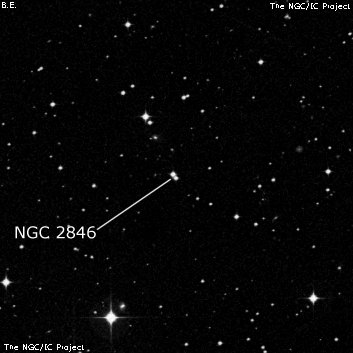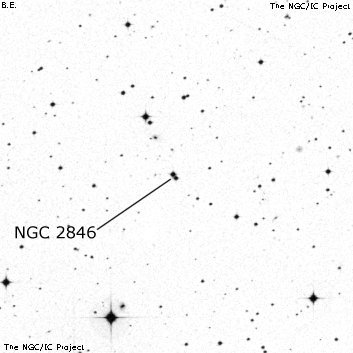NGC/IC Project Restoration Effort
(This is a very very beta version)
NGC2846


Basic Information
Location and Magnitude
Right Ascension: 9:19:40.4
Declination: -14:40:32
Constellation: HYA
Visual Magnitude:
Historic Information
Discoverer: Parsons L.
Year of discovery: 1874
Discovery aperture: 72.0
Observational
Summary description: vS Cl (neb?), * 10 sf 4'
Sub-type: *2
Corwin's Notes
=====
NGC 2846 is a double star. This was found by Lord Rosse (or by his observer
at the time, Ralph Copeland) who thought it a star with a very small nebula
nearby. Even though no accurate position is given, micrometric offsets to
nearby stars positively identify the star they thought nebulous.
A few years later, Lord Rosse (or Dreyer, who was then the resident observer
at Parsonstown) reobserved the object, but could see no nebulosity. Instead,
he suggested a very small cluster.
A correction to the position, by Bigourdan, appeared in the Notes to the first
IC. However, there is some error in Bigourdan's observation, since his
offsets point to a blank region of sky. Just north of his position is a 15th
magnitude star; another is just west. He probably saw one or the other of
these. In any case, he missed Lord Rosse's double star, so we have to
discount his correction.
My first thought was to accept the first observation of the single star as
N2846, but Glen Deen pointed out that the two star images are actually in
contact on the Sky Survey. While they would not have been merged on a fairly
good night at the 72-inch, they are still clearly close enough together to
have misled some veteran observers into believing that one star was nebulous,
or that there was a cluster present. Since the NGC itself accepts the second
observation, it seems best to follow that.



